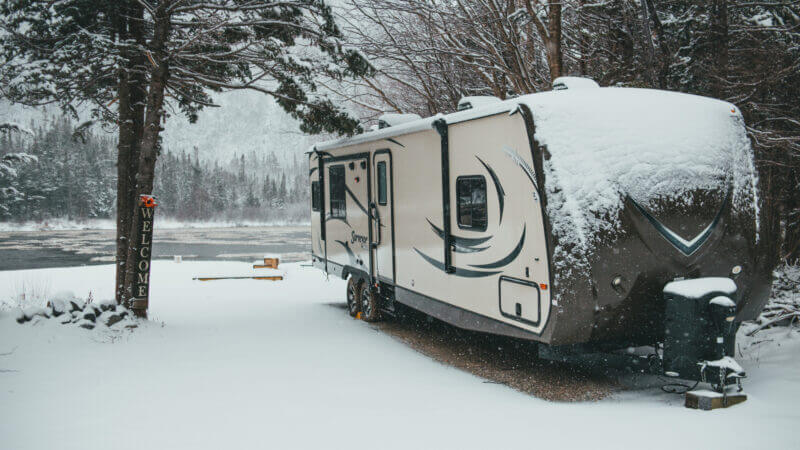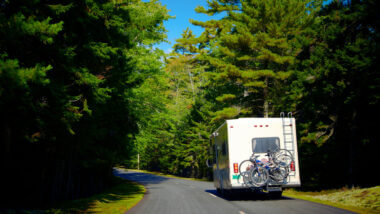Table of Contents Show
While many RVers head south for the winter, some see the cold weather as a challenge. Even if you don’t plan to stay in the cold weather for long, you’ll want to be ready. Today we want to share some of our best tips on how to stay warm in your RV. Let’s get started!
How to Stay Warm in Your RV
No matter your RV camping style, you need to stay warm. There are a few things you can do to keep the temperature up in your RV. Let’s take a look!
Use Your RV Furnace
Your RV’s furnace is one of the most efficient ways to heat your RV. Your RV furnace will likely be ducted throughout your RV. This venting system helps distribute the heat evenly throughout the RV. If your RV has an all-season rating, it probably will have a heat duct that distributes heat into your RV’s underbelly as well. This heat helps protect water lines from freezing in colder temperatures. If temperatures drop, be sure you’re protecting your underbelly by regularly running the furnace.
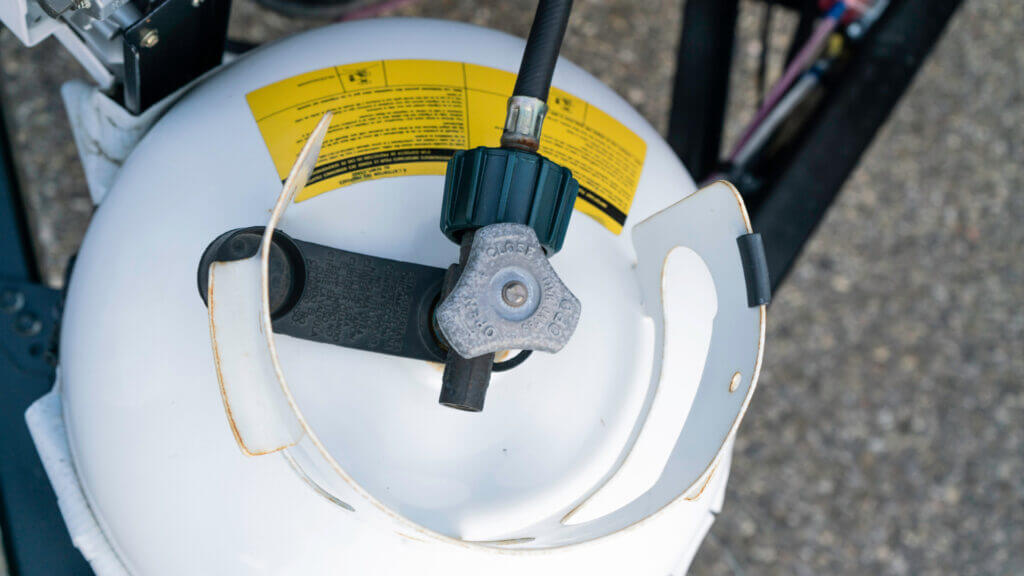
Your RV’s furnace will likely burn propane to generate heat, which means making sure you’ve got a sufficient amount on hand when temperatures drop. The coldest temperatures are usually overnight, and so your furnace will burn more propane throughout the night.
Be sure you have a plan for filling up your propane supply when needed. Using your propane to heat your RV is usually the most cost-efficient way to stay warm. Propane heat can be beneficial when your campsite has a metered power pole. A metered power pole means you’re paying for your power usage, and electrical heat can quickly add up.
Utilize Space Heaters
A space heater is another excellent resource to utilize to stay warm in your RV. Space heaters are compact, which makes for easy storage, and create an incredible amount of heat. Depending on the size of your RV, one or two of these can keep you warm. Many RVs come equipped with a built-in space heater that resembles a fireplace.
Whether you’re using a space heater to heat a room or your entire RV, they can be incredibly dangerous. Space heaters are safest to use while you’re home. Confirm your space heater has safety features.
Because these produce an enormous amount of heat, they also use an incredible amount of power. Pushing your RV electrical connections to the max is dangerous and can lead to overheated wires and potentially a fire. Be mindful of your electrical usage.
Use Insulating Vent Pillows
Warm air rises, and often RV manufacturers place air vents on the ceiling. These vents act as exits for the warm air you’ve worked hard to create. Luckily, venting pillows can help.
A vent pillow fits into a standard-sized RV vent. A vent pillow acts like insulation and prevents warm air from escaping. Many vent pillows are covered with a reflective material to help reflect heat away during the warmer months.
Insulate Your Windows
Your RV’s windows can let in a tremendous amount of cold air. Make sure you insulate your windows to prevent cold air from passing through. Insulated curtains can help protect your RV year-round.
Many RVers will cover their windows with a product like Reflectix. This product helps block cold air from entering through the windows but also limits your visibility. The material could block sunlight from entering your RV during cooler months, preventing it from warming up.
Using an insulating film is an excellent option if you’d like to see through your windows still but keep the cold air out. The film can fit the inside of your RV windows. You’ll then heat it with a hairdryer to shrink the film for a tight fit. This will create a barrier that prevents cold air from making its way into your RV.
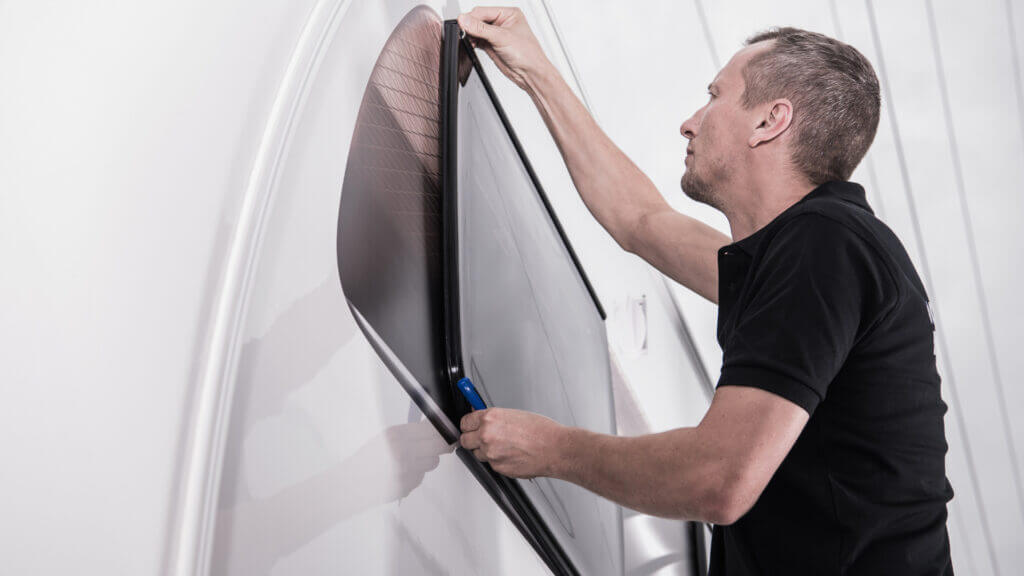
Battle Condensation with a Dehumidifier
Condensation can quickly become a breeding ground for mold. A dehumidifier helps take the moisture out of the air and limit condensation. Be sure you have a dehumidifier capable of providing coverage for your entire RV If you’re planning to RV in cooler weather or climates with lots of humidity. You may have better results in purchasing smaller dehumidifier units for each living space.
Layer Up!
It’s much easier and cheaper to stay warm if you’re wearing multiple layers of clothing. Buy a pair of quality wool socks and a comfortable sweatshirt, and you’ll be warm in no time!
Use Skirting if Stationary
One accessory that many stationary RVers use for the winter is skirting. The goal is to protect the underbelly of your RV from the elements. Using insulation board, specifically designed canvas RV skirting, or hay bales are great ways to do this. Be warned that hay can attract rodents and pests, however.
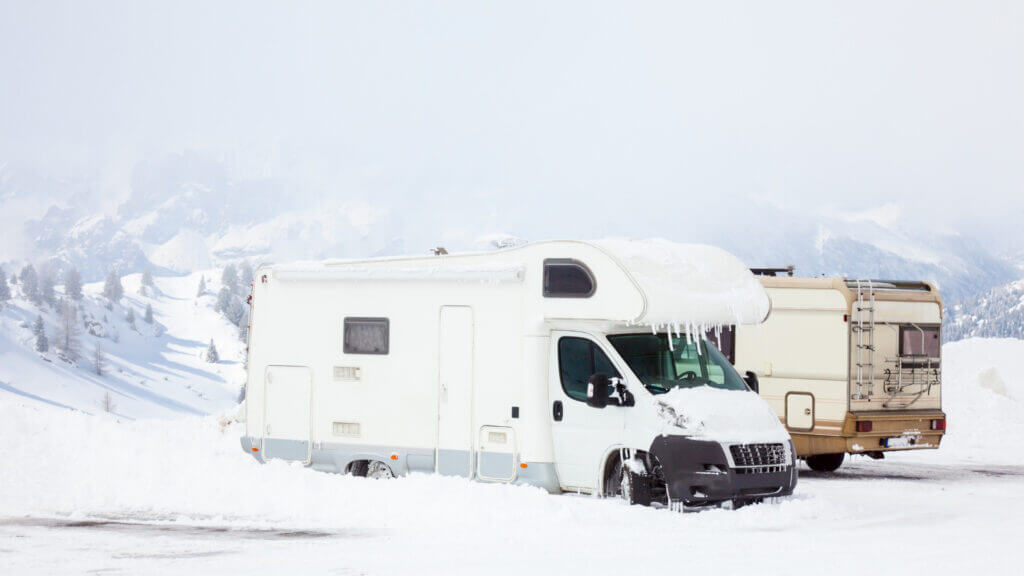
Protecting Your RV from the Cold
Keeping your RV warm not only makes it more comfortable but also protects your RV. Let’s look at a handful of tips for keeping your RV safe from the cold!
Use Heat Tape or a Heated Hose
Your RV’s water hose will quickly freeze once the temperature dips. While your water hose can handle the expansion reasonably well, the water connections at the RV can’t. This expansion can cause significant damage to these connections, and you’ll have issues when the ice unthaws, and you attempt to use the water.
Heat tape or a heated hose keeps the temperature of the water in your hose above freezing. Keep these accessories on hand if you plan to RV in cooler climates because the weather can change incredibly quickly.
Heat Bays that House Plumbing
Running your RV furnace will not only keep the living space in your RV warm but also your storage bays. These bays often house the plumbing for your RV’s water system. If your RV’s heating system includes a vent in your bays, it will pump warm air into this area to keep it warm. Doing this helps avoid any potential water lines or fittings from cracking. Make sure to keep these storage bays closed as often as possible to keep the warm air confined.
Insulate Gate Valve Area and Keep Warm
Wrapping your gate valve area is a great way to keep it warm and avoid any damage. Much of this area can contain water and is often plastic. Expanding water can crack the plastic. If your gate valve area does freeze, wait for it to unthaw before attempting to empty your RV’s tanks, as it could cause permanent damage to the gate valve’s internal components.
Crack Cabinet Doors to Protect Plumbing
Another trick to protecting your RV plumbing is to slightly crack open the cabinet doors that house plumbing in your RV. This trick helps introduce warmer air into the cabinet areas and protects your water lines from freezing.
You want to stay warm when adventuring in new and exciting places. The cold doesn’t have to prevent you from enjoying yourself. What are some of your best tips for staying warm in your RV in cooler temperatures?




